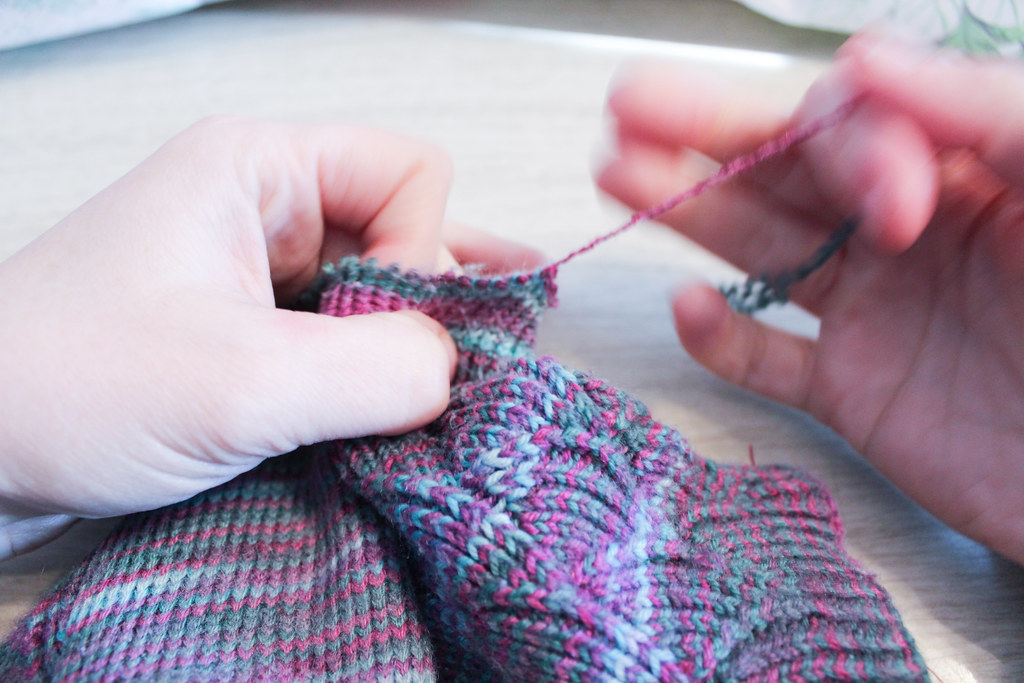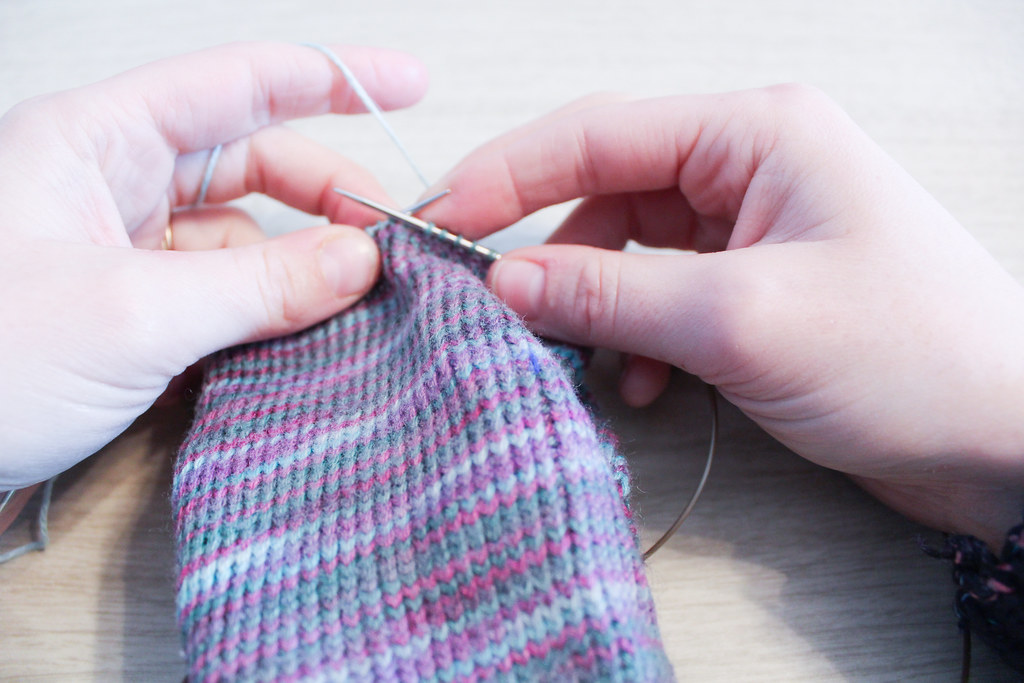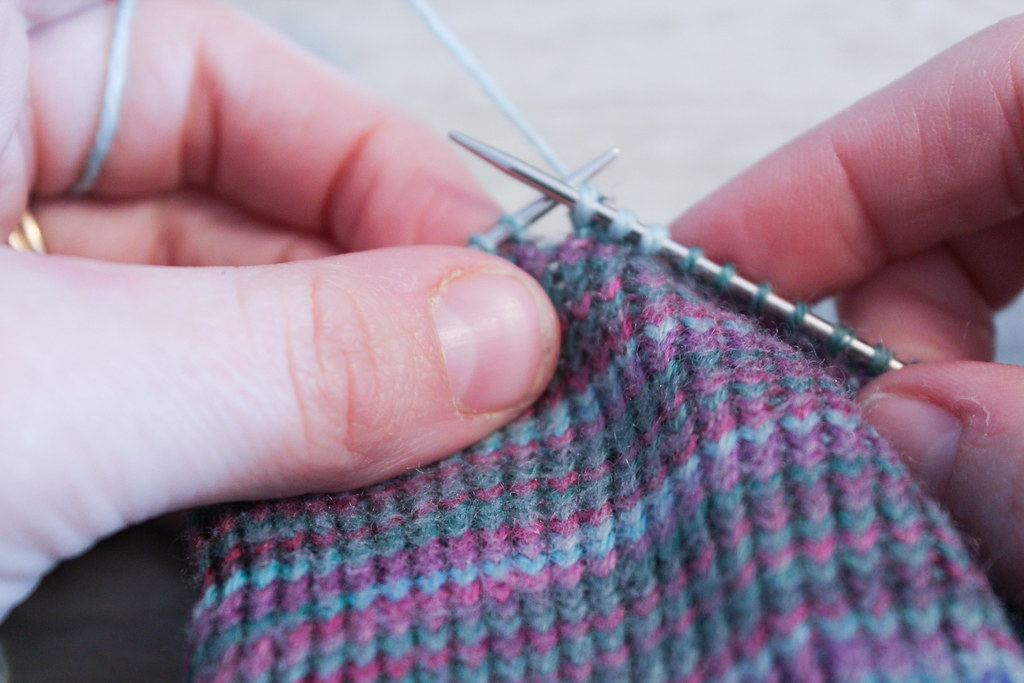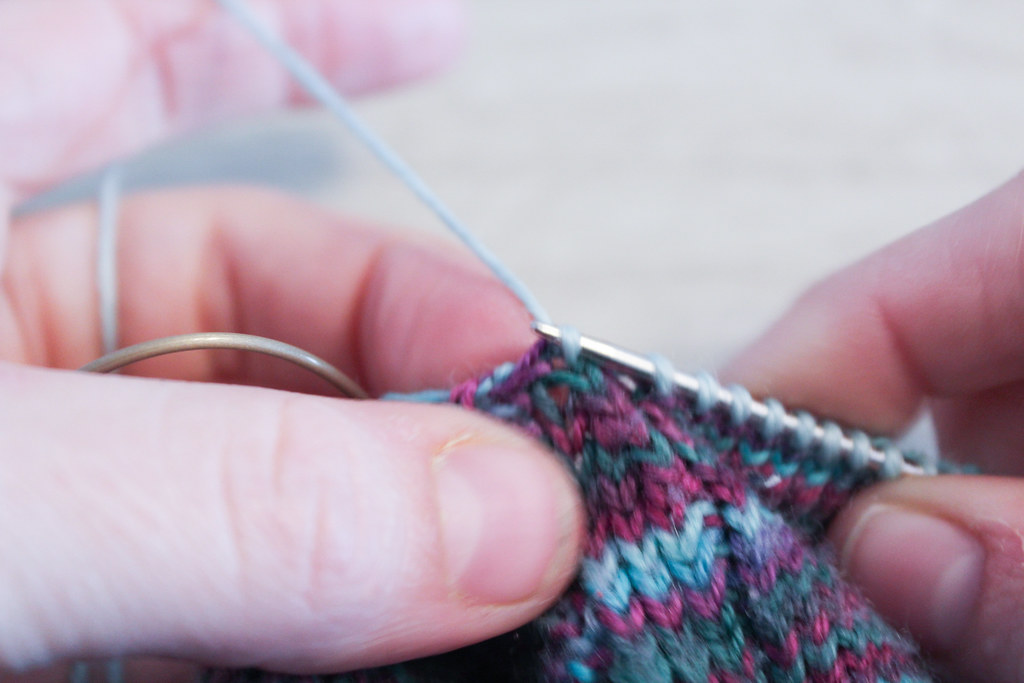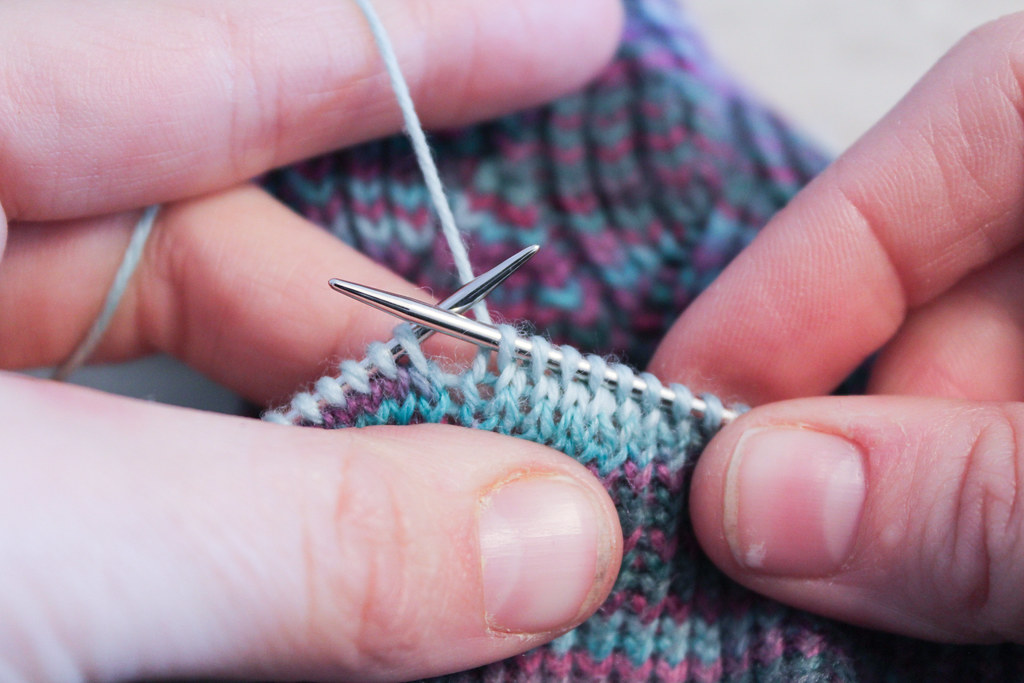One of the reasons I love my mother is because she gives me back the hand-knit socks I made her to repair. Today I’m going to show you why I love afterthought heels, and how easy it is to replace the heel in an afterthought heel sock.
These socks are Pomatomus, an older pattern on Knitty. You might notice here that my stitches on the sole are twisted… I had a theory a few years back that socks with twisted stitches might wear better. While I don’t think that’s the case anymore, please just ignore the twisted stitches if you notice such things.
 |
| Holes in the Sock |
As you can see above, a hole has developed between the heel and the body of the sock. This is due to a few different things – first, I didn’t really know how to weave in my ends as well as I do now, so things are not staying together as well. Second, my mother has a rather wide heel-to-ankle ratio (like me) and I’ve learned since I made this pair that it’s better to add a bit of extra room at the heel. Finally, these socks are over five years old, and one of my mother’s favorite pairs I’ve made her – so they are just wearing out.
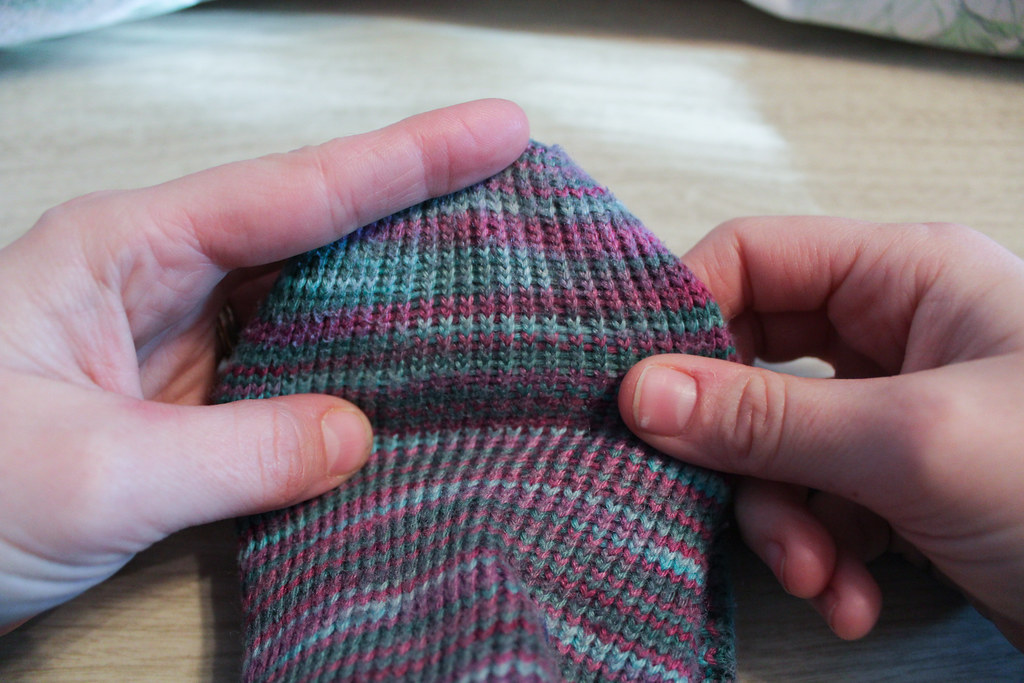 |
| Thin Stitches |
You can see how thin the stitches are wearing.
So I’m going to make my mother a new pair of heels, and in the process save the yarn to do some other repairs to the sock (mostly reinforcing). The first step is to remove the old heel.
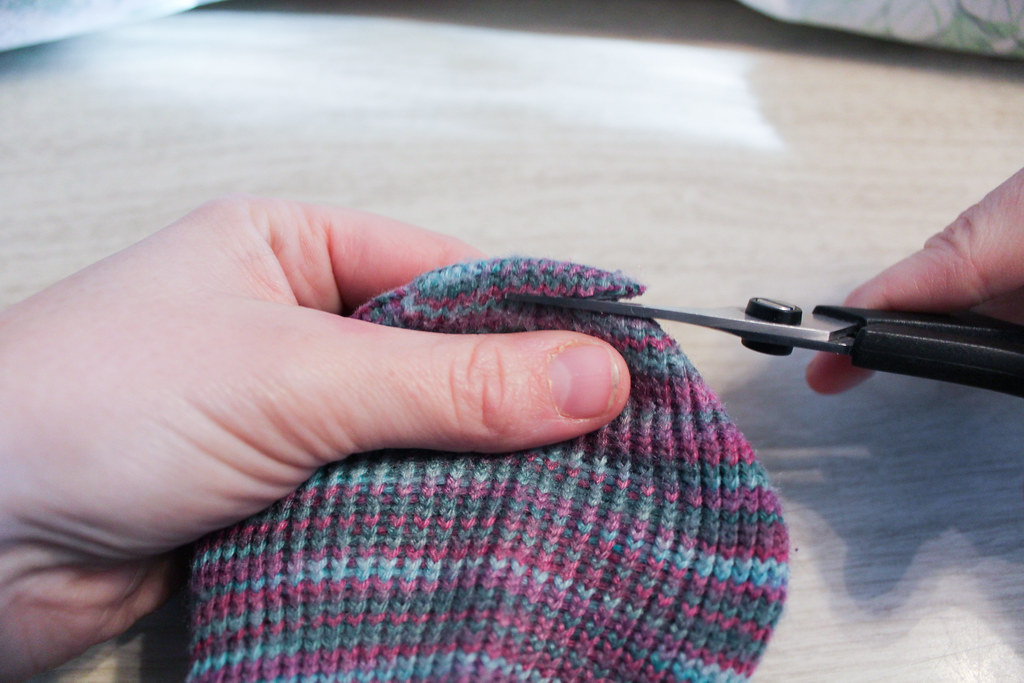 |
| Make small cuts! |
I used scissors to just cut the first few rows because the yarn was so felted together there, and I’d done a better job weaving in the end at the heel, so I could find the end to unravel.
Snip!
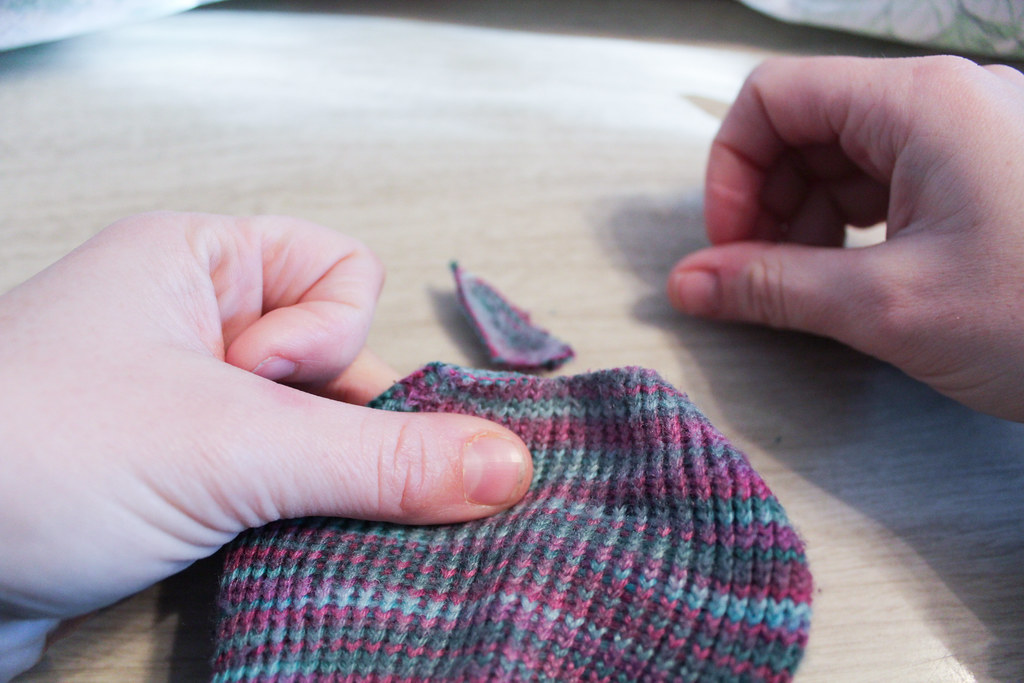 |
| All Gone! |
Heel tip is gone.
I then began pulling the little bits of cut stitches away from the yarn that didn’t get snipped, until the fuzzies were all out.
 |
| Removing little fuzzies |
It took a while, and I ended up with a lot of lint to throw away.
Then I found an end to start pulling. It worked for about half a row, and then ended, because I had snipped it in the process of snipping out the other end.
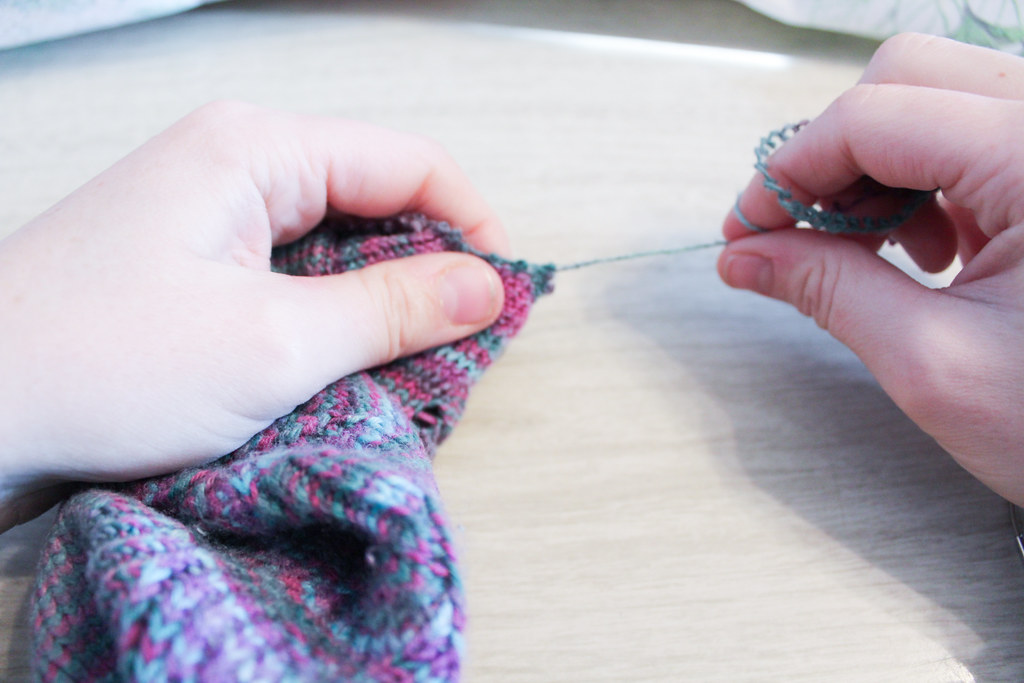 |
| pulling yarn |
The second end I started pulling was good. I kept pulling that until I was on the last row of the afterthought heel. I then started picking up stitches as I pulled out each stitch. I was slow and careful – I didn’t want to drop any stitches!
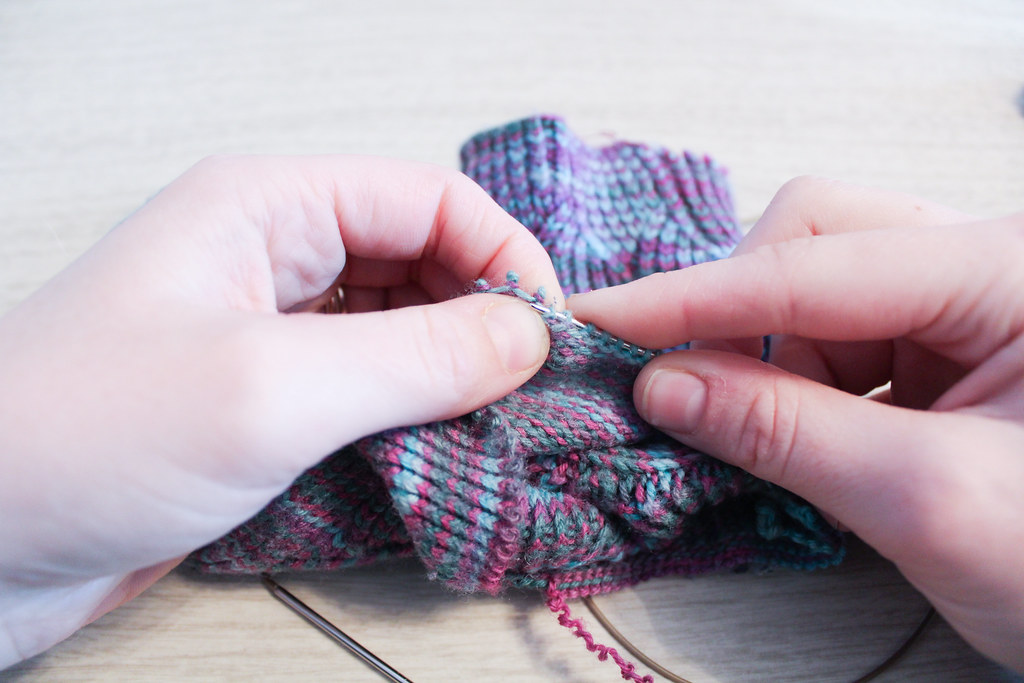 |
| Picking up stitches |
The thing that worked to my advantage was that this sock has been washed and dried many times – the yarn wanted to stay in the place where it had been – in the stitch. So I’d have to actively tug at stitches in order to make then drop, because the yarn is so matted together with wear.
 |
| kinky yarn |
As you can see, the yarn wanted to stay crinkly even after I’d pulled it all out. It reminded me of a spring.
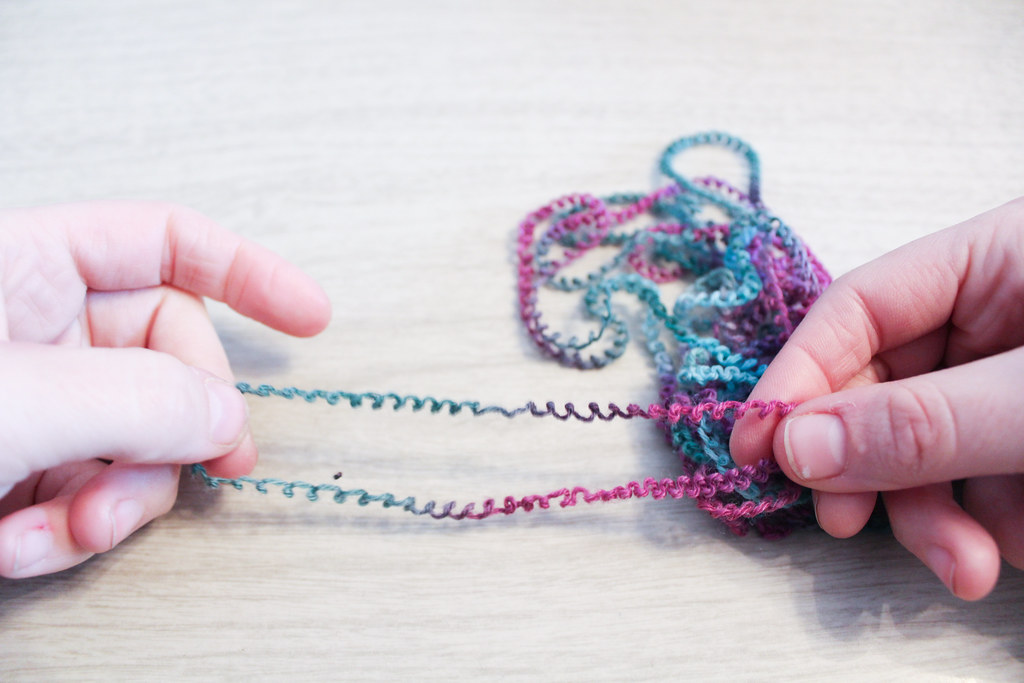 |
| boing! |
This yarn I gathered up and made into a mini-skein. I wet it down, hung it from a hook in the Farm’s basement, and hung a wrench from it until it was dry, to straighten the yarn out again so I could use it for other repairs.
But back to the sock heel.
When you’ve picked up all the stitches on both sides, it should look like the sock has sprouted a mouth.
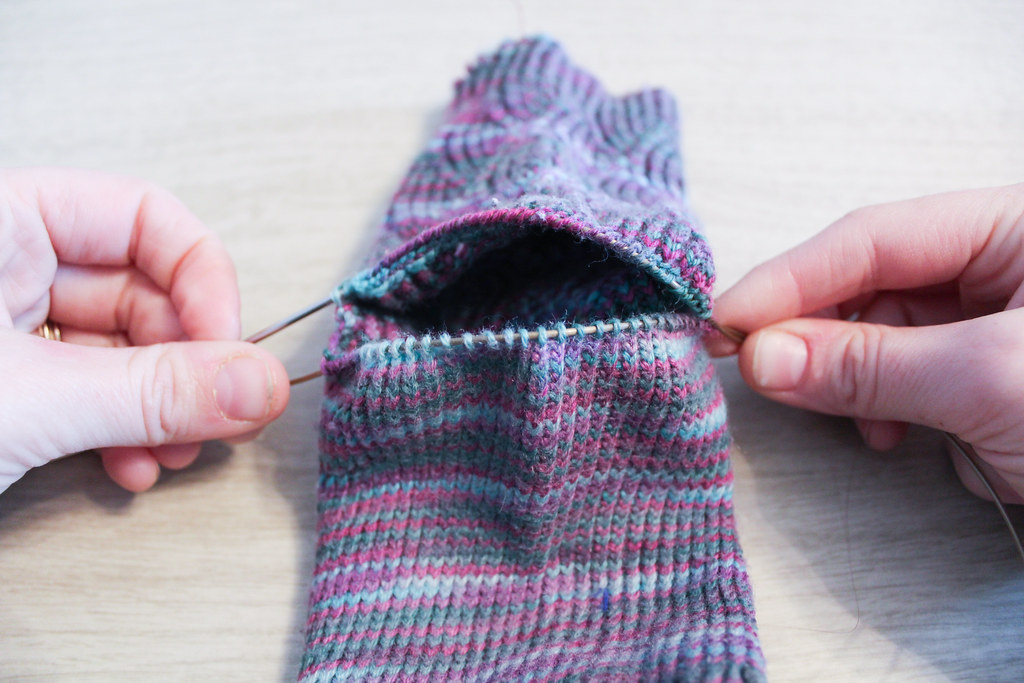 |
| open heel |
Om-nom-nom-nom.
You’ll notice how, at each side of the live stitches on the cable to the needle, there’s a little gap, where there’s no stitches. In a bit, when we’re working with the new yarn, we’ll pick up stitches along those gaps so there aren’t any holes.
I like to slip to the middle of the sock to join my new yarn. This makes the join less obvious, and also because I think it’s easier to weave in ends in plain stockinette rather than where the gaps are. (Another trick I learned since making these socks!)
I joined the yarn by just beginning to knit with the new yarn, along the old stitches. I left the tail hanging, as I’d weave that in later.
When I got to the gaps I was talking about earlier, I picked up 2 stitches, along the edge, trying to keep the yarn nice and tight here, so the stitches didn’t become sloppy.
Then I kept knitting all around, doing the same for the 2nd gap as I did for the 1st gap. After I knitted all around, then I began my preferred method of decreases, whichever you prefer for an after-thought heel.
I worked, continuing to decrease, until I only had a few stitches left. Rather than doing the Kitchener, I just mattress stitched the live stitches together, pulling tight as I went. I think it creates a nicer ending, rather than trying to get my Kitchener stitches to match my gauge.
You’ll note, below, that I happened to work the heel in a slightly tighter gauge than the rest of the sock. This happened for three reasons. First, my gauge has changed in the last five years. Second, the yarn I used for the heel is slightly lighter weight than the yarn for the sock. This is because I wanted to match for color rather than for the exact right yarn. Third, I used a smaller needle size to accommodate the smaller yarn. I think, after wearing them a few times, the difference in gauge will even out, or at least become less noticeable.
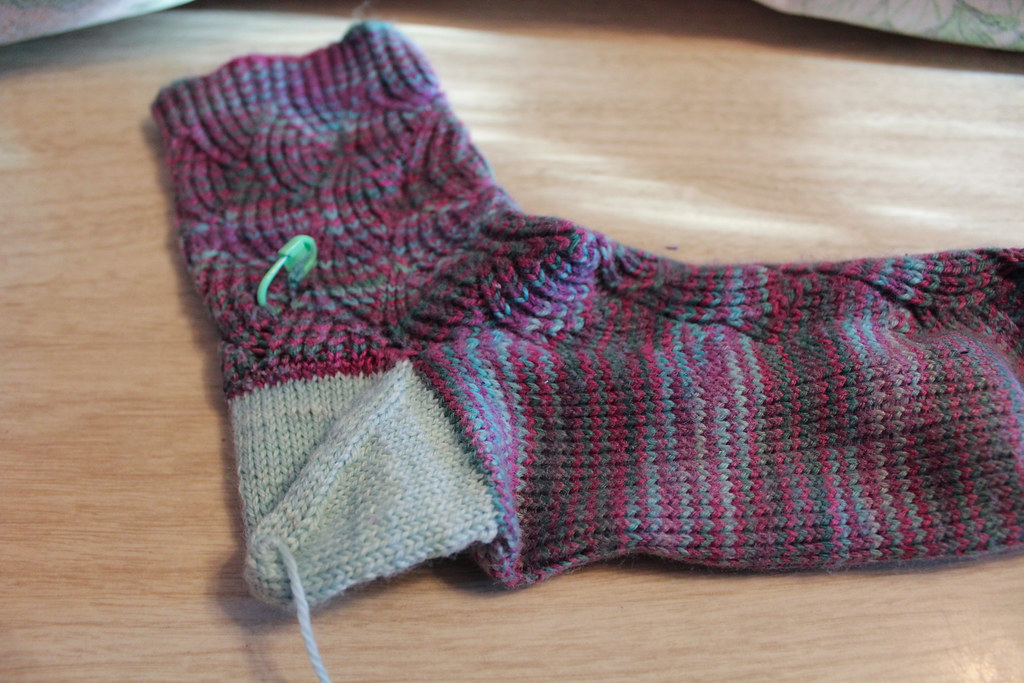 |
| fixed sock – the stitch marker is to mark a place I need to fix |
Got questions? Shout them out! I’d love to help troubleshoot your own sock repairs!

